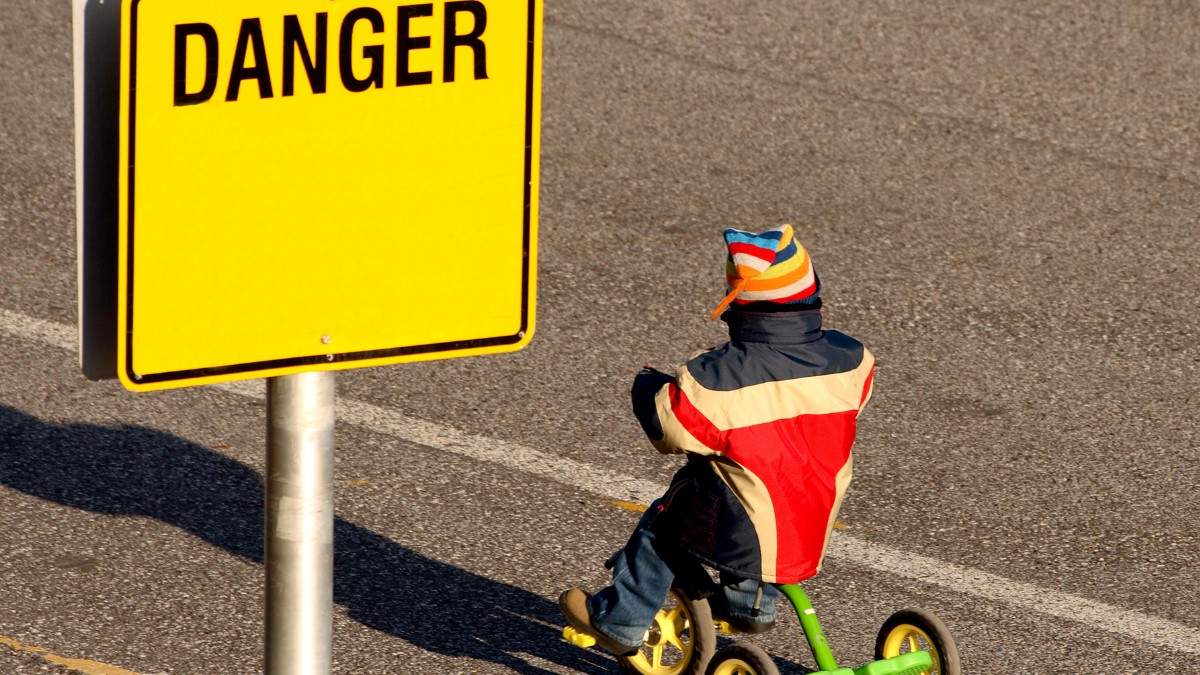A child’s sense of danger helps them navigate the world safely, but for children with autism, this awareness can be different.
Some may not recognize risky situations, like running into the street or touching a hot stove. Others might feel extreme fear over things that seem harmless, like a buzzing light or a barking dog. These differences can make everyday life challenging for both children and their families.
Understanding how autism affects a child’s sense of danger is key to keeping them safe while helping them explore the world with confidence.
How Does Autism Affect a Child’s Sense of Danger?
Autism can significantly impact a child’s sense of danger, often making it difficult for them to recognize and respond appropriately to hazardous situations. Many autistic children experience differences in sensory processing, which can lead to either heightened or reduced sensitivity to environmental cues.
For example, a child who is under-responsive to sensory input may not notice or react to warning signs like loud alarms, oncoming traffic, or hot surfaces. Conversely, an overly sensitive child might become overwhelmed by certain stimuli, potentially leading to avoidance behaviors or distress in situations that are actually safe.
These differences in perception can make it challenging for autistic children to judge risks effectively and take the necessary precautions.
Additionally, challenges with social understanding and communication can further impact an autistic child’s ability to recognize danger. They may struggle to interpret facial expressions, tone of voice, or verbal warnings that signal risk.
The Role of the Prefrontal Cortex
The prefrontal cortex plays a crucial role in decision-making and risk assessment. In individuals with autism, atypical connectivity patterns in this brain region can affect their ability to evaluate potential dangers effectively.
This impairment may hinder their capacity to make appropriate decisions in risky situations, further contributing to their reduced awareness of danger.
Understanding these neurological differences is essential for parents and caregivers. Recognizing how autism affects a child’s sense of danger can help in developing strategies to enhance safety awareness and decision-making skills.

Sensory Processing and Danger Awareness
Understanding how sensory processing issues affect danger awareness is crucial for parents and caregivers of individuals with autism. These sensory challenges can significantly influence how a child perceives and responds to potential threats in their environment.
Sensory processing issues are common in individuals with autism and play a significant role in their awareness of danger.
Many children on the spectrum experience hyper- or hyposensitivity to sensory inputs. This means they may either be overly sensitive to certain stimuli or not sensitive enough, which can distort their perception of the environment.
Children with autism often do not seem to have an innate safety “antenna” that helps them recognize and respond to dangers effectively. This lack of sensory processing efficiency can hinder their ability to assess risks in various situations. Many adults on the spectrum reflect on their childhood experiences and express strong feelings about safety, indicating that these issues can persist into later life. Understanding how sensory differences, especially in relation to touch, play a role in these experiences is crucial—our article, “How Do Autistic Children Experience Physical Touch,” explores this connection in depth and sheds light on how touch sensitivity can impact both safety awareness and emotional well-being.
The distorted perception of the environment due to sensory processing issues can lead to inappropriate responses to danger. For instance, a child may not react to a loud noise that signals danger or may be overwhelmed by sensory input, causing them to flee from a safe situation.
The motivations for wandering among children with autism can vary. According to parents, the top five reasons include:
- Enjoying running and exploring
- Heading to a favorite place
- Trying to escape an anxious situation
- Pursuing a special interest
- Escaping uncomfortable sensory stimuli
These illustrate the complexities of how sensory processing issues can affect a child’s sense of danger. Understanding these factors is essential for developing effective strategies to enhance safety awareness in individuals with autism.

Consequences of Reduced Danger Awareness
Reduced danger awareness in individuals with autism can lead to significant consequences that affect their safety and well-being. Two major areas of concern are the increased risk of accidents and injuries, as well as vulnerability to exploitation.
Increased Accidents and Injuries
Children with autism often exhibit a diminished sense of danger, which can result in a higher likelihood of accidents and injuries. This lack of awareness can lead to engagement in risky behaviors, such as wandering away from safe environments.
Statistics highlight the severity of this issue. Roughly half, or 48%, of children with autism attempt to elope from a safe environment. Such elopement can lead to dire consequences.
Vulnerability to Exploitation
Individuals with autism are also at a heightened risk of exploitation and abuse. Nonverbal children and teens with autism are particularly vulnerable due to their perceived inability to communicate effectively. The abuse rate for children with developmental disabilities is 3.4 times higher than for children without disabilities.
High-functioning adults face similar risks. They may struggle to read body language and interpret a person’s intent, making them easier targets for victimization.
Many verbal adults have reported that, in hindsight, they recognized situations where they had inadvertently placed themselves in vulnerable positions.
Parents of children on the autism spectrum often have valid concerns about their child’s safety, regardless of age. Parents must educate themselves on strategies to help their children learn about safety and prevent wandering, thereby reducing the risk of accidents and exploitation.
How to Teach Safety to Individuals with Autism
Teaching safety to individuals with autism is crucial for enhancing their awareness of potential dangers. This process involves implementing various strategies and creating personalized safety plans tailored to each individual’s needs.
Several effective strategies can be employed to teach danger awareness to individuals on the autism spectrum. These include:
- Visual Supports: Utilizing pictures, charts, and symbols can help convey safety messages clearly. Visual aids can serve as reminders of safe behaviors and potential dangers.
- Role-Playing Scenarios: Engaging in role-playing can provide practical experience in recognizing and responding to dangerous situations. This interactive approach allows individuals to practice safety skills in a controlled environment.
- Leveraging Special Interests: Incorporating a child’s special interests into safety lessons can enhance engagement and retention. For example, if a child is interested in trains, safety lessons can be framed around train stations and crossing safety.
- Collaboration with Therapists and Educators: Working with professionals who understand autism can provide additional insights and resources. Therapists and educators can offer tailored strategies that align with the child’s learning style.
Developing personalized safety plans is also essential for addressing the unique needs of individuals with autism. These plans should consider the individual’s specific challenges and strengths, ensuring that safety measures are effective and practical.
Personalized safety plans can include:
- Recognizing specific dangers in the individual’s environment, such as busy streets or bodies of water.
- Outlining what to do in various situations, such as how to respond to strangers or what to do if they feel lost.
- Listing important contacts, including family members, friends, and local authorities, that the individual can reach out to in case of an emergency.
- Safety plans should be revisited regularly to ensure they remain relevant as the individual grows and their circumstances change.
With the help of these strategies and creating personalized safety plans, parents and caregivers can significantly enhance the danger awareness of individuals with autism. This proactive approach helps to mitigate risks and fosters a greater sense of security for both the individual and their families.
Conclusion
Understanding how autism affects a child’s sense of danger is essential for fostering a safe and supportive environment.
While some children with autism may lack awareness of certain risks, others may experience heightened sensitivity to specific stimuli, making everyday situations overwhelming. It’s crucial to remember that every child is unique, and their responses to danger will vary.
With the right guidance, we ensure that children with autism are empowered to thrive while staying safe in an often unpredictable world. Our ABA therapy services at Golden Care Therapy are designed to cater to a child’s unique needs. Our dedicated team is committed to delivering compassionate, evidence-based care that makes a real difference.
Contact us today to learn more about our exceptional autism services in Georgia, New Jersey, Indiana, New York, and Florida. Let’s work together to support your child’s success!
Sources:



